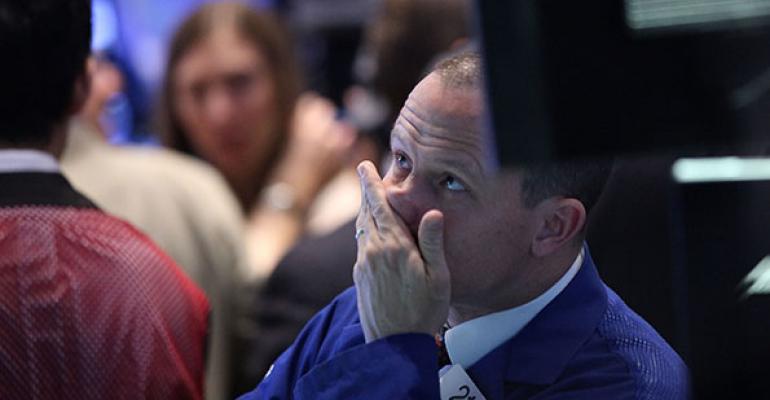Trading in all securities resumed on the New York Stock Exchange after a three-hour outage on Wednesday.
Trading of stocks were halted at 11:30 a.m. Wednesday following earlier reports of technical difficulties, although NYSE-listed issues were still trading on other exchanges.
After the halt, U.S. stocks extended their losses, but in low volumes, with the S&P 500 hitting a session low and the Dow Jones Industrial Average and Nasdaq both falling more than 1 percent.
"It's under control. We're just waiting for word. There's no sign of panic at all," Mark Otto of J. Streicher & Co in New York said from the NYSE floor.
"We're waiting to hear word on if there's going to be a reopening, and when it is or any more details."
U.S. markets were in the red even before the halt, as the slide in Chinese markets spurred concerns over its impact on global economic growth.
Beijing unveiled yet another battery of measures to arrest the sell-off in shares and the securities regulator warned of "panic sentiment" gripping investors in the world's second-largest economy.
Chinese shares have fallen more than 30 percent in the last three weeks, and some investors fear China's turmoil is now a bigger risk than the crisis in Greece.
"With China, investors fear that could be indicative of a broader economic weakness," said Scott Brown, chief economist at Raymond James in St. Petersburg, Florida.
"We've seen commodity prices fall in the recent days and there's the fear that China may be slowing down a lot more than previously thought."
Copper prices fell to a six-year low and oil prices hit a three-month low. [O/R]
Fears of a slow down in China will be a concern for U.S. companies, especially materials and industrial companies, which derive a chunk of their profit from the region.
Alcoa (AA.N) reports results after the close of markets, kicking off the quarterly earnings season. U.S. corporate profits are expected to have fallen 3.1 percent in the second quarter, according to Thomson Reuters estimates data.
At 12:02 p.m. ET the Dow Jones industrial average .DJI was down 219.24 points, or 1.23 percent, at 17,557.67, the S&P 500 .SPX was down 28.43 points, or 1.37 percent, at 2,052.91 and the Nasdaq Composite .IXIC was down 74.48 points, or 1.49 percent, at 4,922.98.
All the 10 major S&P 500 sectors were lower, with the telecommunications index .SPLRCL down 1.6 percent.
U.S.-listed shares of Chinese companies took a beating, with Alibaba (BABA.N) falling 1.9 percent. Baidu (BIDU.O) fell 3.2 percent and Weibo (WB.O) fell 3.8 percent.
Euro zone members have asked Greece to come up with new proposals for a special EU summit on Sunday.
Investors looking for clues on the timing of a U.S. interest rate hike will study the minutes from the U.S. Federal Reserve's June 16-17 meeting, due at 2 p.m. ET.
United Airlines (UAL.N) was down 2.2 percent at $53.11 after its flights at all U.S. airports were briefly grounded due to computer issues.
Tesla Motors (TSLA.O) fell 4.4 percent to $255.99 after Pacific Crest downgraded the stock to "sector weight" from "overweight" on valuation, the second rating cut in two days.
Declining issues outnumbered advancing ones on the NYSE by 2,391 to 523, for a 4.57-to-1 ratio on the downside. On the Nasdaq, 2,198 issues fell and 490 advanced for a 4.49-to-1 ratio favoring decliners.
The S&P 500 index showed 2 new 52-week highs and 11 new lows, while the Nasdaqrecorded 20 new highs and 85 new lows.
(Editing by Savio D'Souza)






